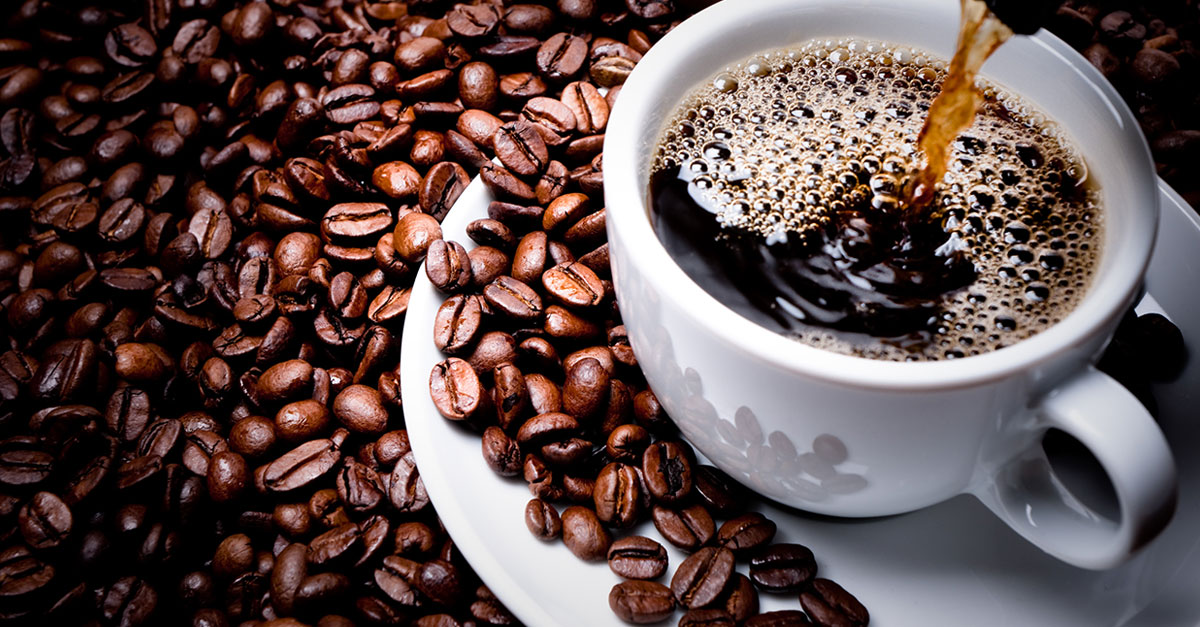When it comes to good-for-you beverages, popular drinks such as red wine and green tea tend to get the most press. But the real heavyweight among health drinks in America is coffee.
Hundreds of scientific studies show that daily coffee drinking can lower one’s risk for serious conditions such as heart attack and stroke…diabetes…obesity…cancer…Alzheimer’s disease…Parkinson’s disease…and perhaps even depression.
New scientific evidence: In a 16-year study of more than 500,000 people, published in Annals of Internal Medicine, those who drank three or more cups of coffee daily had up to 12% (men) and 7% (women) lower risk of dying from any cause over the study period, compared with people who didn’t drink coffee.
My story: With so much remarkable scientific evidence about coffee, I recently traveled the globe to find the healthiest and most delicious coffees. What I discovered…
THE BEST BEANS
What makes coffee so healthy? There’s no question that it’s rich in antioxidants known as polyphenols. But coffee’s real health-promoting muscle comes from a particular type of polyphenol called chlorogenic acid (CGA), which is uniquely effective in dousing the fires of inflammation and stopping oxidation.
The key fact is that some coffee beans contain far more CGAs than others. For example, the beans with the highest content of CGAs are typically grown at high altitudes and close to the equator in countries such as Kenya, Ethiopia, Colombia and parts of Brazil, where environmental conditions trigger the production of polyphenols (including CGAs) that can protect their cells—and yours.
My advice: Always drink high-CGA coffees. Among the commercial coffees we tested, one of the highest in CGAs you can buy at the grocery store was Dunkin’ Donuts Original Blend…with McCafé Premium Roast Decaf, Medium Roast, not far behind. However, artisanal hand-roasted coffees have 50% more CGAs than what you’ll find at the grocery store (see below).
Note: Even though caffeinated coffees can have about 25% more CGAs than decaffeinated versions, decaf is also a rich source of these powerhouse polyphenols. Most flavored coffees don’t use high-quality CGA-rich beans because the flavoring overwhelms the taste.
THE BEST ROASTS
Coffee lovers often gravitate to the bold flavor of dark roast brews, but this could be a mistake when it comes to health benefits. That’s because the very high temperatures that are required for dark roasts destroy polyphenols (including CGAs) and can generate toxic products such as acrylamide, the carcinogenic chemical found in french fries and potato chips. Note: The research we conducted, which roasted the same bean across 10-degree increments from 380°F to 470°F, found a steady increase in acrylamide levels.
Bonus: Light and medium roasts that preserve CGAs and other polyphenols are also naturally delicious enough to forgo fattening additives such as cream and sugar, which blunt the health benefits.
My advice: For the biggest health boost, forgo dark-roasted beans and opt instead for a light roast. Medium roast is the next best option.
THE BEST GRIND
If you are looking for the most healthful coffee, fresh ground is the way to go. With preground coffee, the most delicate flavors are almost instantly lost…and it usually falls short on CGAs.
There’s a plethora of choices when it comes to coffee grinders. I recommend a conical burr grinder, which includes two cone-shaped, revolving cutting surfaces. This type of grinder is better than a metal blade grinder because you get a much more uniform size, which improves flavor. Best product: Mahlkönig. Good product: A Cuisinart has conical burrs—and a range of grind settings.
My advice: To achieve the most flavor when trying a new coffee, start with a very fine grind and move incrementally to a coarse one. If the coffee is too finely ground, it can taste bitter. Medium-coarse grind produces a lovely cup of coffee and still delivers lots of polyphenols.
THE BEST BREW
Brewing techniques fall into two categories—pour-over and immersion. In pour-overs, you place coffee grounds in a filter and pour a stream of water over them, and coffee drains into a container below. With immersion, the water completely envelops the coffee grounds.
My favorite pour-over device is the Kalita. Another good choice is the Chemex, which is one of the most popular pour-over devices in the US.
Other good choices: Keurig devices complete an automatic pour-over extraction cycle with minimal mess and time. Some excellent organic K-cups from Kenya, Colombia and Ethiopia test high for polyphenols and score very high for taste.
Among immersion devices, I favor the Aeropress—it’s relatively inexpensive and makes a great cup of coffee.
FOR BEST RESULTS
Research shows that three to five cups of coffee daily is the optimal amount for better health. However: Many people are genetically slow to metabolize caffeine. You’re likely a slow caffeine metabolizer if more than two cups of caffeinated coffee make your heart race, trigger irritability or disturb your sleep. In that case, drink high-polyphenol decaffeinated coffees.
HIGH-QUALITY ROASTERS
The following are examples of high-polyphenol coffee beans…
• Barrington Coffee Roasting Company: Cachajinas Guatemala Huehuetenango…Gisuma Rwanda.
• Brio Coffeeworks: Mexico Chiapas…Ethiopia Sidama Ardi.
• Dr. Danger Coffee*: Daktari Nyeri Gathugu.
• Green Mountain Coffee: Green Mountain Coffee Kenya (K-cup)…Organic Ethiopia
Yirgacheffe (K-cup).
*Dr. Arnot is the founder of the Dr. Danger Coffee brand. A portion of the proceeds from this product are donated to humanitarian efforts in Kenya.


